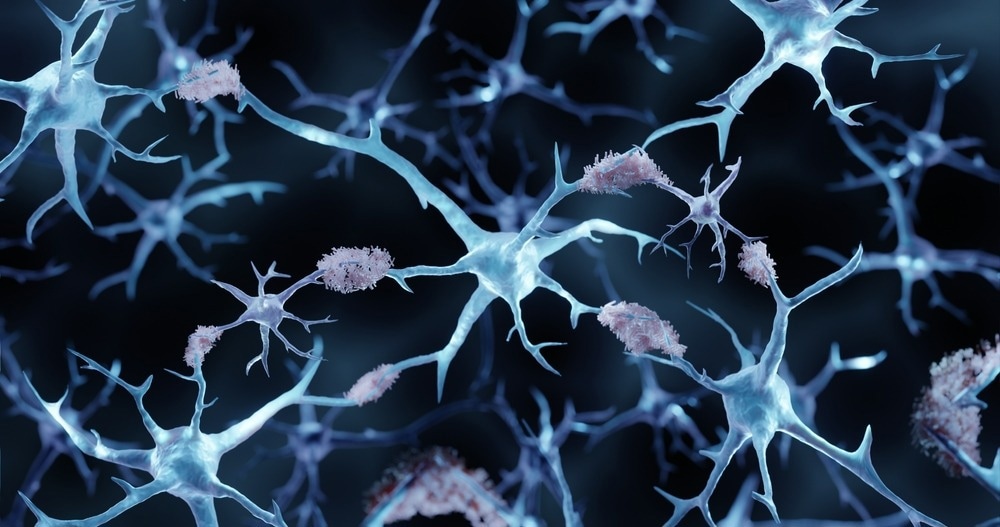Reviewed by Danielle Ellis, B.Sc.Jun 21 2023
Tau aggregates have become the main study focus for figuring out the mechanisms underlying neurodegeneration since they are a prevalent form of amyloid protein. Tau fibrils and oligomers, among other forms of tau aggregates, have been linked to a variety of neurodegenerative disorders.
 a Pump-probe 3D chemical imaging scheme. b 3D RI map reconstruction scheme. c “Cold” state: imaging without mid-IR pump beam; “Hot” state: imaging with mid-IR pump beam. d Sample reconstruction results. e 2D fluorescence intensity imaging. f Depth-resolved mid-IR fingerprint spectra generation and related protein secondary structure spectroscopic analysis. g 3D visualization of protein secondary structure. Image Credit: Jian Zhao, Lulu Jiang, Alex Matlock, Yihong Xu, Jiabei Zhu, Hongbo Zhu, Lei Tian, Benjamin Wolozin, and Ji-Xin Cheng
a Pump-probe 3D chemical imaging scheme. b 3D RI map reconstruction scheme. c “Cold” state: imaging without mid-IR pump beam; “Hot” state: imaging with mid-IR pump beam. d Sample reconstruction results. e 2D fluorescence intensity imaging. f Depth-resolved mid-IR fingerprint spectra generation and related protein secondary structure spectroscopic analysis. g 3D visualization of protein secondary structure. Image Credit: Jian Zhao, Lulu Jiang, Alex Matlock, Yihong Xu, Jiabei Zhu, Hongbo Zhu, Lei Tian, Benjamin Wolozin, and Ji-Xin Cheng
However, little is known about how tau aggregates arise and the disease pathways connected to them. High-resolution chemical imaging methods that can identify intracellular volumetric tau aggregates in their natural surroundings are required for studying tau aggregation.
For this goal, a wide range of methods has been developed, including X-Ray crystallography, cryo-electron microscopy (Cryo-EM), nuclear magnetic resonance spectroscopy, circular dichroism spectroscopy, and infrared spectroscopy imaging based on atomic force microscopy.
With regard to defining diverse forms of amyloid proteins, particularly tau aggregates, these techniques have made tremendous progress.
The inability of the current systems to deliver volumetric site-specific spectroscopic analysis and three-dimensional imaging of intracellular protein aggregates in their natural biological forms, however, places significant limitations on their potential to be used.
The difficulty of recovering the three-dimensional chemical information of intracellular protein aggregation in their natural cellular settings hence continues to be a major barrier.
Dr. Ji-Xin Cheng of the Photonics Center at Boston University, Dr. Jian Zhao (former member of the Cheng Lab at Boston University) of the Picower Institute for Learning and Memory at the Massachusetts Institute of Technology, Dr Benjamin Wolozin of the School of Medicine at Boston University, Dr. Lei Tian of the Department of Electrical and Computer Engineering at Boston University, and their colleagues published their findings on computational fluorescence-guided mid-infrared (mid-IR) photothermal microscope known as Fluorescence-guided Bond-selective Intensity Diffraction Tomography (FBS-IDT) in Light Science & Applications.
FBS-IDT combines pump-probe pulsed MIP intensity diffraction tomography with single-photon 2D fluorescence imaging.

Image Credit: ART-ur/Shutterstock.com
With the aid of this ground-breaking method, intracellular tau fibrils can be analyzed using mid-IR spectroscopy and molecular-specific 3D chemical imaging.
FBS-IDT, in particular, permits the effective extraction of chemical data pertaining to particular protein aggregates from background protein signals inside cellular fluids. High speed (~0.05 Hz, up to ~6 Hz) and high resolution (~350 nm laterally, ~1.1 m axially) are both possible with 3D spectroscopic imaging using FBS-IDT.
Using this hyperspectral 3D chemical imaging capacity, FBS-IDT showed that tau fibrils and lipid buildup could be related. Notably, this method can visualize the protein secondary structure of intracellular tau fibrils in three dimensions and obtain depth-resolved mid-IR fingerprint spectra.
The importance and benefits of the FBS-IDT approach were emphasized by the researchers:
Researchers stated, “FBS-IDT overcomes the challenges associated with 3D chemical imaging of intracellular amyloid protein aggregates and their protein secondary structures within fluid environments. This accomplishment is realized through a scan-free and modular design that utilizes a low-cost brightfield microscope with add-on light sources. The cost of the FBS-IDT system is at least 30 times lower than that of state-of-the-art electron microscopy methods, such as Cryo-EM, and it incurs negligible operational fees. This cost-effective tabletop system is suitable for routine usage in most laboratory settings.”
They further added, “Our technique imposes no additional restrictions on biological samples, thereby opening up a new avenue for in vivo imaging of intracellular protein aggregates. Furthermore, our method is built on a modular design that can be readily adapted to fulfill diverse imaging requirements. We firmly believe that our FBS-IDT method can offer novel contributions to neurodegeneration research and various biomedical applications.”
Source:
Journal reference:
Zhao, J., et al. (2023). Mid-infrared chemical imaging of intracellular tau fibrils using fluorescence-guided computational photothermal microscopy. Light Science & Applications. doi.org/10.1038/s41377-023-01191-6